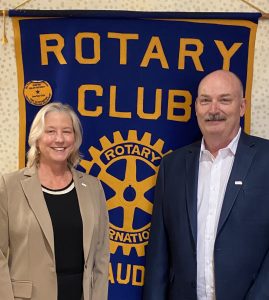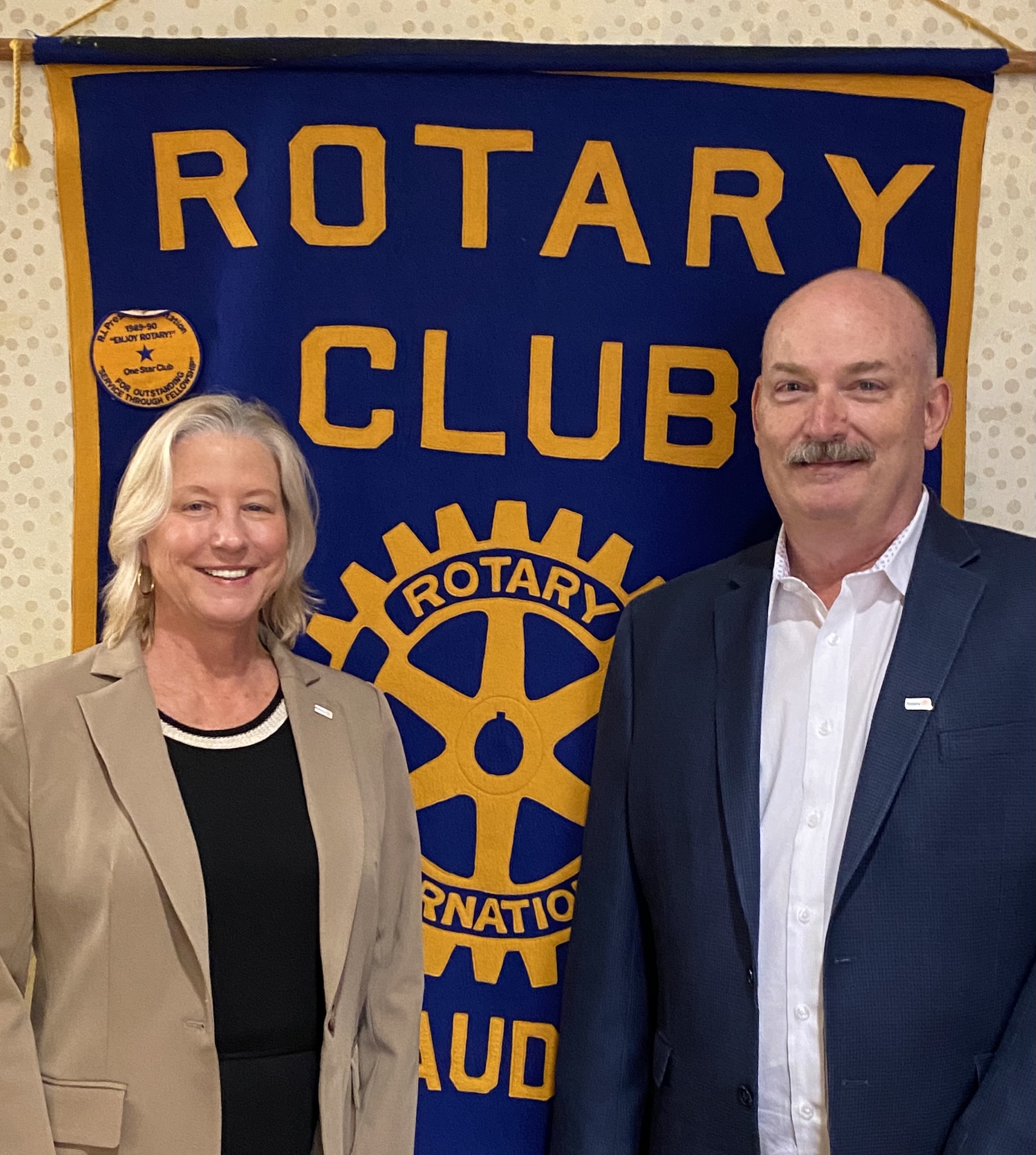
New Rotarians Mary Boaz and John Perry
By Ariel Miller, ESRAG Newsletter Editor
Inspired by the service ethic of Rotarians, John Perry joined the Rotary Club of Fort Lauderdale, Florida in 2023 along with his wife Mary. He had witnessed the fellowship and good deeds of members belonging to the International Fellowship of Rotarian Scuba Divers. For more than a decade he and his wife were invited – even though they were non-members – to join scuba diving trips with the Rotarians. “We often went to island destinations,” he explains. “Organizers always used a portion of our trip payment for programs benefitting the local community, sometimes humanitarian but often environmentally-focused, like coral reef restoration in Fiji.”

Mary and John enjoying a Rotary scuba diving trip before they became Rotarians.
Since joining he’s discovered that many Rotarians have commonly-held misconceptions regarding recycling of post-consumer waste and how to promote a circular economy. This is a gap he can help fill. For decades, Perry served in various roles related to plastic production technology, then capped off his career managing one of the largest material recovery facilities (MRF) in the United States. He will give a talk Aug. 23 to ESRAG’s Projects + Webinar to address recycling myths and facts so you can teach your community to recycle right.
The first step – consistent with the Rotary test of truth – is raising awareness. In this interview, Perry explains the factors shaping the decisions of citizens, cities, recycling companies, and buyers of recovered materials so you can teach your community to recycle right.
The key question for municipal recycling in the US is how cities can sustain it when costs are rising and demand for recycled materials falls below the ballooning supply. “Cities are trying to divert waste from the landfill, and there’s also the public’s desire to recycle, but there’s also an economic question: is the cost of recycling lower than landfilling?” Perry says.
“In the early 2000’s, cities would get a rebate for their recyclables. As more municipalities started curbside recycling, it went into a negative zone,” he explains. “The price for recycled commodities went down, but processing and transport costs went up.”
Here are some of the factors in those trends.
Single-stream recycling and the problem of contamination:

Bundled cardboard. Credit: Shutterstock purchase, LZ, 8/5/23
Over the past two decades, American cities have moved to single-stream recycling – rather than asking the household or business to sort and separate the wastes. This reduces the collection costs and is safer for sanitation workers, but it has caused a huge contamination problem. “The quality of the commodity is a factor for the downstream process. The paper mill, plastic plant or aluminum maker doesn’t want to pay for cross-contamination,” Perry says. “Much has been reported in the news, creating the impression that recyclables are collected but are then landfilled. Nothing is further from the truth, but this has created confusion and lowered the morale of many conscientious folks who want to do the right thing.”
“As more and more municipalities went to curbside single stream recycling, contamination levels rose from 10% to 30%. This slows down equipment, adds more workers, and results in a lower price for commodities because there is more contamination,” he continues. “A major Florida municipality did a composition audit a few years ago. The amount of garbage in the single stream recycling was higher than the national average amount of garbage in garbage! When you get to 50% contamination, you need twice as much processing capacity and twice as many trucks,” half of them to take the contamination to the landfill after being processed through the MRF.
This is bad for the planet, Perry explains. “Putting trash into the recycling stream increases the carbon footprint because it has to be transported twice.”
Who’s going to pay to keep recycling going?
The large, automated facilities that sort high volumes of municipal recycling are really expensive to build and operate. If cities can’t break even, how will voters be willing to pay to continue it? “A number of cities faced a situation of no-bid for processing of recyclables,” Perry says. ‘Voters want to continue to recycle, but elected officials stop short at enforcement efforts.”
The alternatives to the typical municipal single-stream recycling facilities are also expensive to implement. These include “waste-to-energy facilities – waste incinerators that generate electricity – yet this is only an option if the transportation is affordable,” says Perry. “Some cement plants have converted their equipment to consume waste paper and plastic instead of coal. The energy is used to fire the kiln and the ash becomes part of the cement, replacing materials that need to be mined and imported. Some other options are promising but not well developed yet.”
Rotary Clubs should lead by example:
“Consider making Rotary-sponsored events zero-waste. If we’re hosting a public event and we can set the terms, we may positively impact community awareness,” he notes. Another obvious choice is eliminating disposable cups and other non-recyclables from recurring Club meetings.
And remember the mantra “Reduce, Reuse and Recycle”. Rotarians can advocate to minimize packaging, repurpose many items, and find ways to reveal the facts about what cannot be recycled, because recycling right is essential. “Encourage your club members to visit a local MRF. When you can personally see what’s collected and what arrives at a MRF, it’s a good education on what you should and should not do,” he says.

